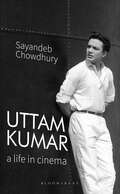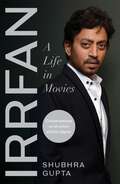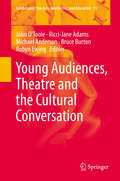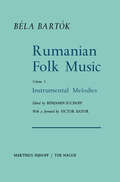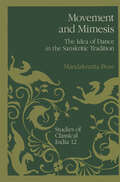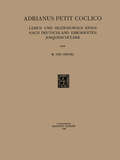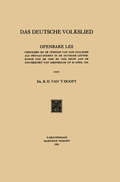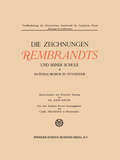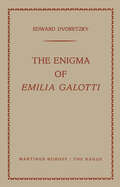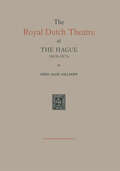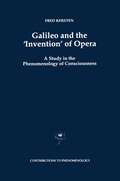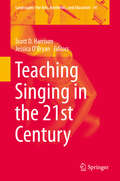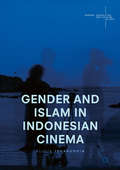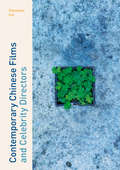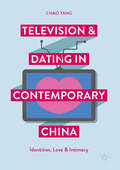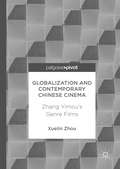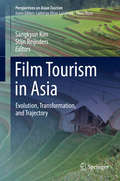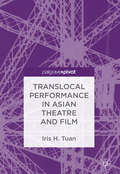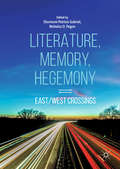- Table View
- List View
Uttam Kumar: A Life in Cinema
by Sayandeb Chowdhury'There is none like Uttam and there will be no one to ever replace him. He was and he is unparalleled in Bengali, even Indian cinema.'-Satyajit Ray, Oscar-winning Indian film-makerActor and screen icon Uttam Kumar (1926–1980) is a talismanic figure in Bengali public life. Breaking away from established codes of onscreen performance, he came to anchor an entire industry and led the efforts to reimagine popular cinema in mid-20th-century Bengal. But there is pitifully less knowledge about Uttam Kumar in the learned circles-be it about his range of style and performance; the attractions and problems of his cinema; his roles as a producer and patriarch of the industry; or his persona, stardom and legacy.The first definitive cultural and critical biography of this larger-than-life figure engages meaningfully with his life and cinema, revealing the man, hero and actor from various, often competing, vantages. The conceptual aim is to locate a star figure within a larger historical and cultural context, and to enquire into how a towering image was mobilised for an ever-greater, wholesome, popular and even, at times, radical and progressive entertainment. A complimentary métier of this work is to explore why and how this star persona would go on to reconstitute the bhadrolok Bengali visual and cultural world in the post-Partition period.But above all, this is the story of a clerk who became an actor, an actor who became a star, a star who became an icon and an icon who became a legend.
IRRFAN: A Life in Movies | Conversations on an Actor and His Legacy
by Shubhra GuptaAn eminent film critic engages Bollywood and beyond in conversation about Irrfan Khan’s art, craft, life and legacy.A spellbinding performer, Irrfan Khan was also a seeker who never stopped honing his skills, each new work a revelation, his oeuvre transformative for Hindi cinema. From his National School of Drama days to his nearly decade-long stint in television and subsequently his arrival in the movies, everyone who watched Irrfan knew they were in the presence of someone special. With his death from an incurable cancer, we lost an actor nonpareil. What is it that gave Irrfan, an ‘outsider’ to Bollywood, his distinction? What has been his contribution to cinema? How does one measure his legacy?Long-time film critic Shubhra Gupta asks these and other probing questions to members of the film fraternity who knew Irrfan, worked with him or observed him closely – Sutapa Sikdar, Shailja Kejriwal, Shyam Benegal, Tigmanshu Dhulia, Vishal Bhardwaj, Naseeruddin Shah, Mira Nair, Konkona Sen Sharma, Anup Singh, Tillotama Shome, Karan Johar, Anurag Kashyap, among several others. As they discuss Irrfan’s films, his craft, and his philosophy as an actor, what emerges is a deeply layered, complex and endlessly absorbing portrait of one of Indian cinema’s most influential artistes.Abuzz with a polyphony of perspectives on the actor and Hindi cinema at large, this is a rich collectible for Irrfan’s admirers and cinephiles alike.
Young Audiences, Theatre and the Cultural Conversation (Landscapes: the Arts, Aesthetics, and Education #12)
by John O’Toole Ricci-Jane Adams Michael Anderson Bruce Burton Robyn EwingThis volume offers rare insights into the connection between young audiences and the performing arts. Based on studies of adolescent and post-adolescent audiences, ages 14 to 25, the book examines to what extent they are part of our society’s cultural conversation. It studies how these young people read and understand theatrical performance. It looks at what the educational components in their theatre literacy are, and what they make of the whole social event of theatre. It studies their views on the relationship between what they themselves decide and what others decide for them. The book uses qualitative and quantitative data collected in a six-year study carried out in the three largest Australian States, thirteen major performing arts companies, including the Sydney Opera House, three state theatre companies and three funding organisations. The book’s perspectives are derived from world-wide literature and company practices and its significance and ramifications are international. The book is written to be engaging and accessible to theatre professionals and lay readers interested in theatre, as well as scholars and researchers. “This extraordinary book thoroughly explains why young people (ages 14-25+) do and do not attend theatre into adulthood by delineating how three inter-linked factors (literacy, confidence, and etiquette) influence their decisions. Given that theatre happens inside spectators’ minds, the authors balance the theatre equation by focusing upon young spectators and thereby dispel numerous beliefs held by theatre artists and educators. Each clearly written chapter engages readers with astute insights and compelling examples of pertinent responses from young people, teachers, and theatre professionals. To stem the tide of decreasing theatre attendance, this highly useful book offers pragmatic strategies for artistic, educational, and marketing directors, as well as national theatre organizations and arts councils around the world. I have no doubt that its brilliantly conceived research, conducted across multiple contexts in Australia, will make a significant and original contribution to the profession of theatre on an international scale.” Jeanne Klein, University of Kansas, USA “Young Audiences, Theatre and the Cultural Conversation is a compelling and comprehensive study on attitudes and habits of youth theatre audiences by leading international scholars in the field. This benchmark study offers unique insights by and for theatre makers and administrators, theatre educators and researchers, schools, parents, teachers, students, audience members of all ages. A key strength within the book centers on the emphasis of the participant voices, particularly the voices of the youth. Youth voices, along with those of teachers and theatre artists, position the extensive field research front and center.” George Belliveau, The University of British Columbia, Canada
Rumanian Folk Music: Instrumental Melodies (Bartok Archives Studies in Musicology #1)
by Bela Bartokn several of his writings on folk music Bela Bart6k recalls an incident I that happened to him in 1904 during a visit to a small village in Tran 1 syl vania. Quite by chance he heard there an eighteen-year-old Hun garian peasant girl singing Hungarian folk songs whose construction was 2 significantly different from the songs he had known until then. This experience appealed to his imagination far deeper than chance oc currences usually do. It sparked in him a creative fire that was there after to impart to his music certain characteristics that are recognizable today as indigenous to the Bart6kian style of composition. The inspirational value of the incident was rekindled by return trips to Transylvania. During these trips he was not merely listening. He began notating, melodies, building them into a coordinated collection. Soon Bart6k's itinerary took him into villages populated in checkered proximity by both Hungarians and Rumanians, thence into little communities where the population was exclusively Rumanian. There he discovered that their songs were much less, if at all, influenced by the urban civilization of Western Europe than those he had collected in Hungarian villages. In an interview he gave to a Transylvanian newspaper in 1922, Bart6k described the difference between the available Hungarian and Rumanian songs.
Movement and Mimesis: The Idea of Dance in the Sanskritic Tradition (Studies of Classical India #12)
by Mandakranta BoseThe most comprehensive view of the evolution of dancing in India is one that is derived from Sanskrit textual sources. These texts are the basic material that students of the dance in India must examine in order to uncover its past. Since the rebirth of informed interest in dancing in early twentieth century, its antiquity has been acknowledged but precisely what the art was in antiquity remains unclear. Discovering the oldest forms of dancing in India requires, as do other historical quests, a reconstruction of the past and, again as in other historical investigations, the primary sources of knowledge are records from the past. In this case the records are treatises and manuals in Sanskrit that discuss and describe dancing. These are the sources that the present work sets out to mine. These texts taken collectively are more than records of a particular state of the art. They testify to the growth of the theory and practice of the art and thus establish it as an evolving rather than a fixed art form that changed as much in response to its own expanding aesthetic boundaries as to parallel or complementary forms of dance, drama and music that impinged upon it as India's social and political situation changed. When we place the Sanskrit treatises in chronological sequence it becomes clear that the understanding of the art has changed through time, in its infancy as well as in maturer periods.
Adrianus Petit Coclico: Leben und Beziehungen Eines Nach Deutschland Emigrierten Josquinschulers
by Marcus CrevelDieser Buchtitel ist Teil des Digitalisierungsprojekts Springer Book Archives mit Publikationen, die seit den Anfängen des Verlags von 1842 erschienen sind. Der Verlag stellt mit diesem Archiv Quellen für die historische wie auch die disziplingeschichtliche Forschung zur Verfügung, die jeweils im historischen Kontext betrachtet werden müssen. Dieser Titel erschien in der Zeit vor 1945 und wird daher in seiner zeittypischen politisch-ideologischen Ausrichtung vom Verlag nicht beworben.
Das Deutsche Volkslied
by B.H. HooftDieser Buchtitel ist Teil des Digitalisierungsprojekts Springer Book Archives mit Publikationen, die seit den Anfängen des Verlags von 1842 erschienen sind. Der Verlag stellt mit diesem Archiv Quellen für die historische wie auch die disziplingeschichtliche Forschung zur Verfügung, die jeweils im historischen Kontext betrachtet werden müssen. Dieser Titel erschien in der Zeit vor 1945 und wird daher in seiner zeittypischen politisch-ideologischen Ausrichtung vom Verlag nicht beworben.
Die Zeichnungen Rembrandts und seiner Schule im National-Museum zu Stockholm: Veroffentlichung der Schwedischen Gesellschaft fur graphische Kunst
by John KruseDieser Buchtitel ist Teil des Digitalisierungsprojekts Springer Book Archives mit Publikationen, die seit den Anfängen des Verlags von 1842 erschienen sind. Der Verlag stellt mit diesem Archiv Quellen für die historische wie auch die disziplingeschichtliche Forschung zur Verfügung, die jeweils im historischen Kontext betrachtet werden müssen. Dieser Titel erschien in der Zeit vor 1945 und wird daher in seiner zeittypischen politisch-ideologischen Ausrichtung vom Verlag nicht beworben.
The Enigma of Emilia Galotti
by Edward DvoretzkyThe purpose of this study is to report the reactions and criticism of those German, Swiss, and Austrian authors who commented on Les sing's Emilia Galotti from the time of its creation to the twentieth century and to note the various degrees to which it influenced writers of different personal and literary bent. It will be seen that the repre sentatives of a given literary trend, although regarding the play primarily in the light of their own ideals, were not necessarily in accord with one another over certain of its aspects. Emilia Galotti is especially suited to this kind of investigation because it took form in an age when interest in principles of dramatic composition was particularly intense, and because it was written by a figure who was perhaps most influential in the discussions centering on them. Emilia Galotti further lends itself to this study because, despite the fact that it has remained an extremely enigmatic work, it was and continues to be a highly popular play, having been. translated into at least twelve foreign languages and having also had an overture written in its honor.
Galileo and the ‘Invention’ of Opera: A Study in the Phenomenology of Consciousness (Contributions to Phenomenology #29)
by F. KerstenIntended for scholars in the fields of philosophy, history of science and music, this book examines the legacy of the historical coincidence of the emergence of science and opera in the early modern period. But instead of regarding them as finished products or examining their genesis, or `common ground', or `parallel' ideas, opera and science are explored by a phenomenology of the formulations of consciousness (Gurwitsch) as compossible tasks to be accomplished in common (Schutz) which share an ideal possibility or `essence' (Husserl). Although the ideas of Galileo and Monteverdi form the parameters of the domain of phenomenological clarification, the scope of discussion extends from Classical ideas of science and music down to the beginning of the nineteenth century, but always with reference to the experience of sharing the sociality of a common world from which they are drawn (Plessner) and to which those ideas have given shape, meaning and even substance. At the same time, this approach provides a non-historicist alternative to understanding the arts and science of the modern period by critically clarifying the idea of whether their compossibility can rest on any other formulation of consciousness.
Teaching Singing in the 21st Century (Landscapes: the Arts, Aesthetics, and Education #14)
by Scott D. Harrison Jessica O'BryanThis volume brings together a group of leading international researchers and practitioners in voice pedagogy alongside emerging academics and practitioners. Encompassing research across voice science and pedagogy, this innovative collection transcends genre boundaries and provides new knowledge about vocal styles and approaches from classical and musical theatre to contemporary commercial music. The work is sure to be valuable in tertiary institutions, schools and community music associations, suitable for use by private studio teachers, and will appeal to choral leaders and music educators interested in vocal pedagogy. “I thoroughly enjoyed reading this book and I am confident it will help bring all aspects of vocal pedagogy firmly into the 21st century. Refreshingly, many different areas of pedagogy are included in the text so we can all work together to more fully understand the singing voice. Up to the moment research is included along with an exploration of the evolving contemporary styles of singing. Further, areas regarding teaching and curriculum in higher education are also reviewed. All in all, this text a crucial addition to a professional's vocal library.” Jeanne Goffi-Fynn, Teachers College, Columbia University, USA.
Gender and Islam in Indonesian Cinema
by Alicia IzharuddinThis book presents a historical overview of the Indonesian film industry, the relationship between censorship and representation, and the rise of Islamic popular culture. It considers scholarship on gender in Indonesian cinema through the lens of power relations. With key themes such as nationalism, women's rights, polygamy, and terrorism which have preoccupied local filmmakers for decades, Indonesia cinema resonates with the socio-political changes and upheavals in Indonesia’s modern history and projects images of the nation through the debates on gender and Islam. The text also sheds light on broader debates and questions about contemporary Islam and gender construction in contemporary Indonesia. Offering cutting edge accounts of the production of Islamic cinema, this new book considers gendered dimensions of Islamic media creation which further enrich the representations of the 'religious' and the 'Islamic' in the everyday lives of Muslims in South East Asia.
Gender and Islam in Indonesian Cinema
by Alicia IzharuddinThis book presents a historical overview of the Indonesian film industry, the relationship between censorship and representation, and the rise of Islamic popular culture. It considers scholarship on gender in Indonesian cinema through the lens of power relations. With key themes such as nationalism, women's rights, polygamy, and terrorism which have preoccupied local filmmakers for decades, Indonesia cinema resonates with the socio-political changes and upheavals in Indonesia’s modern history and projects images of the nation through the debates on gender and Islam. The text also sheds light on broader debates and questions about contemporary Islam and gender construction in contemporary Indonesia. Offering cutting edge accounts of the production of Islamic cinema, this new book considers gendered dimensions of Islamic media creation which further enrich the representations of the 'religious' and the 'Islamic' in the everyday lives of Muslims in South East Asia.
Contemporary Chinese Films and Celebrity Directors
by Shenshen CaiThis new text examines recent popular Chinese films and derivative cultural phenomena, with a focus on films directed by celebrity directors such as Han Han, Guo Jingming, Xu Jinglei and Zhao Wei. In opposition to Fifth and Sixth Generation Chinese filmmakers who explored the grand-narratives of history, the oppression of the pre-socialist and socialist eras, and those marginalized by socio-economic changes, the celebrity directors at the heart of this book center on the new trends of living and emotional challenges faced by contemporary Chinese people, in particular the younger generations. This book sheds light on newly emerging social and cultural fashions in contemporary China, such as the social stigma of being ‘left-over’ (reflected in Xu Jinglei’s films), the issue of wealth ‘flaunting’ (represented in Guo Jingming’s films) or nostalgia for the long lost innocence of adolescence (demonstrated in Zhao Wei’s film). Considering present-day consumer capitalism through the lens of cinema, this text analyses in detail the significance of films chosen for their relevance, providing a reflection of social reality and cultural changes in 21st century China.
Contemporary Chinese Films and Celebrity Directors
by Shenshen CaiThis new text examines recent popular Chinese films and derivative cultural phenomena, with a focus on films directed by celebrity directors such as Han Han, Guo Jingming, Xu Jinglei and Zhao Wei. In opposition to Fifth and Sixth Generation Chinese filmmakers who explored the grand-narratives of history, the oppression of the pre-socialist and socialist eras, and those marginalized by socio-economic changes, the celebrity directors at the heart of this book center on the new trends of living and emotional challenges faced by contemporary Chinese people, in particular the younger generations. This book sheds light on newly emerging social and cultural fashions in contemporary China, such as the social stigma of being ‘left-over’ (reflected in Xu Jinglei’s films), the issue of wealth ‘flaunting’ (represented in Guo Jingming’s films) or nostalgia for the long lost innocence of adolescence (demonstrated in Zhao Wei’s film). Considering present-day consumer capitalism through the lens of cinema, this text analyses in detail the significance of films chosen for their relevance, providing a reflection of social reality and cultural changes in 21st century China.
Television and Dating in Contemporary China: Identities, Love and Intimacy
by Chao YangThis book considers the changing nature of intimacy in contemporary China, providing a unique case study of romantic subjectivities in young people in the world’s fastest growing economy. Since the implementation of reform in 1978, the economic and socio-cultural environment of modern China has experienced a dramatic transformation under the influence of urbanization and globalization, facilitating more individualized identity among Chinese youth. This book bridges the gap between an emergent emphasis on individualisation and the country’s traditional norms and values. It focuses on young people’s understandings of various forms of relationships such as cohabitation, extramarital relationships and multiple relationships, suggesting a challenge to traditional familial values and an increasingly diversified understanding of the concepts of love and romance. By examining the formation of relationships among 21st century Chinese youth, notably through the lens of popular Chinese TV dating programs, this book considers how dating and relationships mirror China’s changing societal structure and examines social and cultural transformations in Chinese society.
Television and Dating in Contemporary China: Identities, Love and Intimacy
by Chao YangThis book considers the changing nature of intimacy in contemporary China, providing a unique case study of romantic subjectivities in young people in the world’s fastest growing economy. Since the implementation of reform in 1978, the economic and socio-cultural environment of modern China has experienced a dramatic transformation under the influence of urbanization and globalization, facilitating more individualized identity among Chinese youth. This book bridges the gap between an emergent emphasis on individualisation and the country’s traditional norms and values. It focuses on young people’s understandings of various forms of relationships such as cohabitation, extramarital relationships and multiple relationships, suggesting a challenge to traditional familial values and an increasingly diversified understanding of the concepts of love and romance. By examining the formation of relationships among 21st century Chinese youth, notably through the lens of popular Chinese TV dating programs, this book considers how dating and relationships mirror China’s changing societal structure and examines social and cultural transformations in Chinese society.
Globalization and Contemporary Chinese Cinema: Zhang Yimou's Genre Films
by Xuelin ZhouThis pivot considers key transformations within the Chinese film industry since the country opened its doors to the outside world in the late 1970s, and moved from an ideologically-centred censorship system to one of contestation and cooperation between politics, art and market. Focusing on Zhang Yimou, arguably one of China’s most innovative and controversial filmmakers and directors, the author addresses the challenges faced by contemporary Chinese cinema in the face of Hollywood dominance, notably making genre films in an increasingly globalized context, and the necessary compromises between the local and global, the national and the international. Through a combination of textual analysis and context study, it examines action-oriented films Zhang made as responses to a rapidly changing film market and industry.
Globalization and Contemporary Chinese Cinema: Zhang Yimou's Genre Films(PDF)
by Xuelin ZhouThis pivot considers key transformations within the Chinese film industry since the country opened its doors to the outside world in the late 1970s, and moved from an ideologically-centred censorship system to one of contestation and cooperation between politics, art and market. Focusing on Zhang Yimou, arguably one of China’s most innovative and controversial filmmakers and directors, the author addresses the challenges faced by contemporary Chinese cinema in the face of Hollywood dominance, notably making genre films in an increasingly globalized context, and the necessary compromises between the local and global, the national and the international. Through a combination of textual analysis and context study, it examines action-oriented films Zhang made as responses to a rapidly changing film market and industry.
Film Tourism in Asia: Evolution, Transformation, and Trajectory (Perspectives on Asian Tourism)
by Sangkyun Kim Stijn ReijndersThis book focuses on film tourism: the phenomenon of people visiting locations from popular film or TV series. It is based on a unique, Asian perspective, encompassing case studies from around the pan-Asian region, including China, Taiwan, India, Japan, South Korea, Thailand, Hong Kong, Indonesia, and Singapore. By focusing emphatically on film tourism in the non-West, this book offers a timely and crucial contribution to a more comprehensive understanding of the relation between film, culture and place, particularly in light of the increased volume of media production and consumption across Asia, and the consequent film tourism destinations that are currently popping up across the Asian continent.
Translocal Performance in Asian Theatre and Film
by Iris H. TuanThis pivot offers an innovative, trans-local perspective on performance studies in the era of digital technology, considering a range of content from theater to opera, film, dance, and musical theatre. It examines theatre performing arts and film in terms of aesthetics, gender studies, and identity politics, and showcases the value of human accomplishments in theatre and film and their representative artistic works. It also addresses key issues within performance studies, such as gender, class, race, ethnicity, identity, and how minorities portray their ethnicity stories. This book links the trans-national and the trans-local and considers how emerging mobile geographies and new methodologies of interpreting performance in theatre and film reflect the transformations of our understanding of geopolitical time and space.
Translocal Performance in Asian Theatre and Film
by Iris H. TuanThis pivot offers an innovative, trans-local perspective on performance studies in the era of digital technology, considering a range of content from theater to opera, film, dance, and musical theatre. It examines theatre performing arts and film in terms of aesthetics, gender studies, and identity politics, and showcases the value of human accomplishments in theatre and film and their representative artistic works. It also addresses key issues within performance studies, such as gender, class, race, ethnicity, identity, and how minorities portray their ethnicity stories. This book links the trans-national and the trans-local and considers how emerging mobile geographies and new methodologies of interpreting performance in theatre and film reflect the transformations of our understanding of geopolitical time and space.
Literature, Memory, Hegemony: East/west Crossings
by Sharmani Patricia Gabriel Nicholas O. PaganThis edited book considers the need for the continued dismantling of conceptual and cultural hegemonies of ‘East’ and ‘West’ in the humanities and social sciences. Cutting across a wide range of literature, film and art from different contexts and ages, this collection seeks out the interpenetrating dynamic between both terms. Highlighting the inherent instability of East and West as oppositional categories, it focuses on the ‘crossings’ between East and West and this nexus as a highly-charged arena of encounter and collision. Drawing from varied literary contexts ranging from Victorian literature to Chinese literature and modern European literature, the book covers a diverse range of subject matter, including material drawn from psychoanalytic and postcolonial theory and studies related to race, religion, diaspora, and gender, and investigates topical social and political issues —including terrorism, nationalism, citizenship, the refugee crisis, xenophobia and otherness. Offering a framework to consider the salient questions of cultural, ideological and geographical change in our societies, this book is a key read for those working within world literary studies.
Literature, Memory, Hegemony (PDF)
by Sharmani Patricia Gabriel Nicholas O. PaganThis edited book considers the need for the continued dismantling of conceptual and cultural hegemonies of ‘East’ and ‘West’ in the humanities and social sciences. Cutting across a wide range of literature, film and art from different contexts and ages, this collection seeks out the interpenetrating dynamic between both terms. Highlighting the inherent instability of East and West as oppositional categories, it focuses on the ‘crossings’ between East and West and this nexus as a highly-charged arena of encounter and collision. Drawing from varied literary contexts ranging from Victorian literature to Chinese literature and modern European literature, the book covers a diverse range of subject matter, including material drawn from psychoanalytic and postcolonial theory and studies related to race, religion, diaspora, and gender, and investigates topical social and political issues —including terrorism, nationalism, citizenship, the refugee crisis, xenophobia and otherness. Offering a framework to consider the salient questions of cultural, ideological and geographical change in our societies, this book is a key read for those working within world literary studies.
